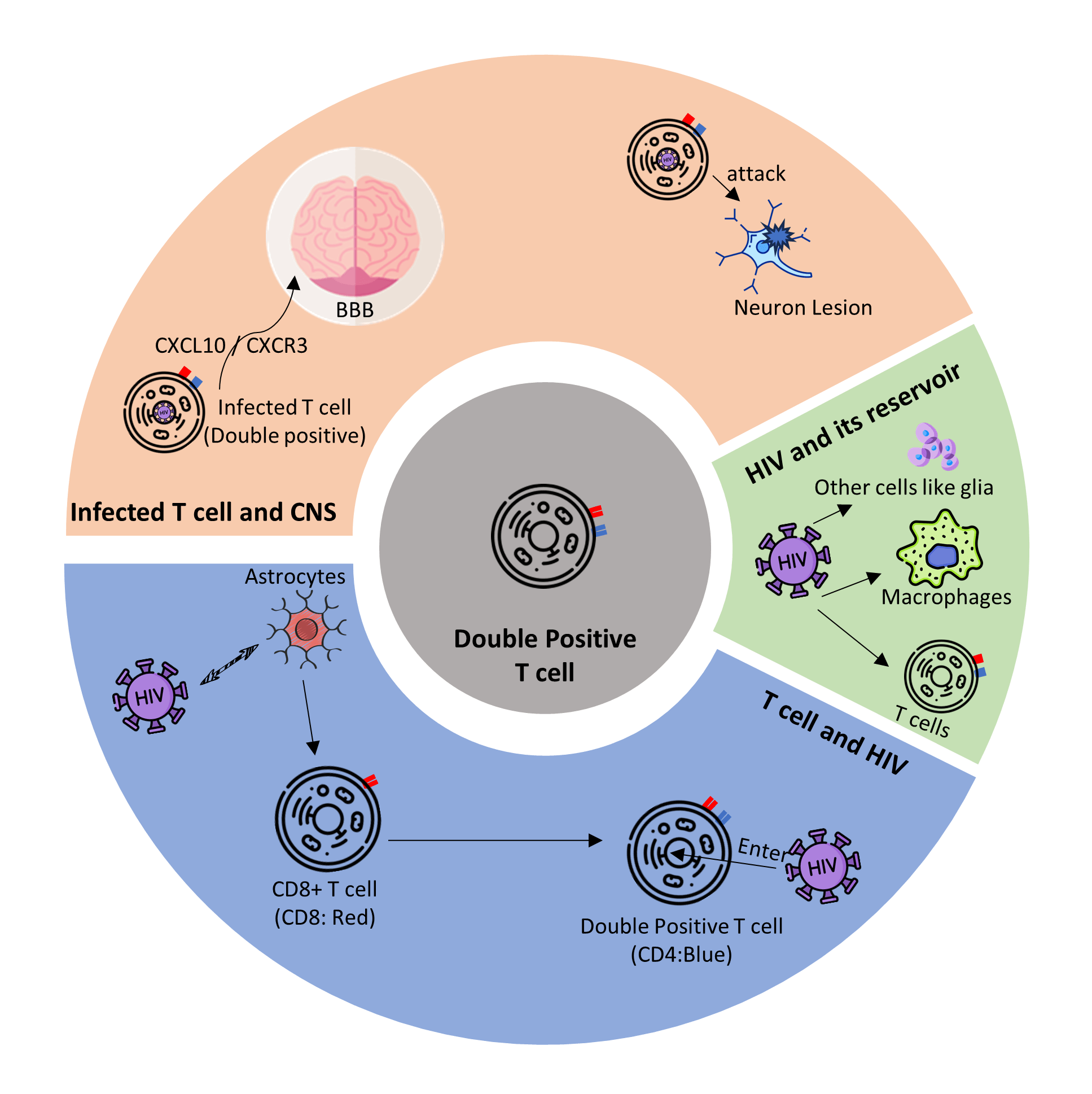 Open Access
Open Access
REVIEW
Reservoir of human immunodeficiency virus in the brain: New insights into the role of T cells
1 Department of Neurosurgery, The Second Affiliated Hospital, School of Medicine, Southern University of Science and Technology, Shenzhen, 518055, China
2 School of Medicine, The Second Affiliated Hospital, Shenzhen, 518000, China
3 Department of Infectious Diseases, National Clinical Research Center for Infectious Diseases, Shenzhen Third People’s Hospital, Shenzhen, 518000, China
* Corresponding Authors: MING CHU. Email: ; HONGZHOU LU. Email:
(This article belongs to the Special Issue: Neuroimmune Interactions at the Crossroads of Health and Disease)
BIOCELL 2023, 47(12), 2591-2595. https://doi.org/10.32604/biocell.2023.030331
Received 31 March 2023; Accepted 31 July 2023; Issue published 27 December 2023
Abstract
Human immunodeficiency virus (HIV) infection of the central nervous system (CNS) has attracted significant attention because it contributes to severe complications of acquired immunodeficiency syndrome (AIDS) and seriously impairs the life quality of infected patients. In this review, we briefly describe the latent infection of HIV in CNS and focus on the role of the important immune cells, such as T cells, in the formation and maintenance of the HIV reservoir in CNS. This review explores the mechanisms by which T cells enter CNS and establish latent infection of HIV in the CNS. In conclusion, we summarize the role of these cells in the interaction between HIV and CNS. With our better understanding of the underlying mechanisms, we propose future directions for the development of novel strategies to eliminate HIV reservoirs in the CNS based on cellular components.Graphic Abstract

Keywords
Cite This Article
 Copyright © 2023 The Author(s). Published by Tech Science Press.
Copyright © 2023 The Author(s). Published by Tech Science Press.This work is licensed under a Creative Commons Attribution 4.0 International License , which permits unrestricted use, distribution, and reproduction in any medium, provided the original work is properly cited.


 Submit a Paper
Submit a Paper Propose a Special lssue
Propose a Special lssue View Full Text
View Full Text Download PDF
Download PDF Downloads
Downloads
 Citation Tools
Citation Tools